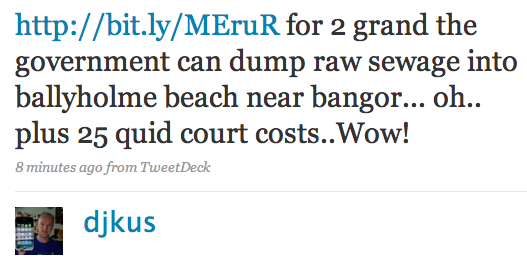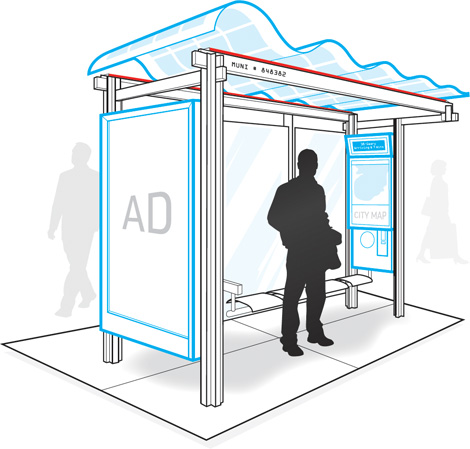I’ve been reading a lot about OpenStreetMap because, for many reasons, travel is something that I’m intending to do a lot more of.
Using your Maps app on your SmartPhone when in a foreign country is just a license for your carrier to print money. When you consider the amount of data transmitted it’s evident that until roaming costs are brought under control. there’s no sense in using online maps when travelling. Which kinda defeats the purpose.
So, OpenStreetMap, if you download the maps (something that you cannot do with Google Maps) seems to be a much more sensible proposition especially now that storage on SmartPhones is getting to the point that this becomes practical.
So, is a map enough?
Of course it is. But where things become interesting is when you combine them with other sources of data. Such as the newly opened data we’re getting out of OpenDataNI or some of the data which is available from NISRA (though the latter seems all embedded in PDF and not raw data at all).
This sort of ‘real life’ data is of immense interest, if people realise they can ask for it.
What about a location-aware app that:
- stays open and records one set of location data every minute. What’s the interest there? It tells you where the fast and slow bits of the roads system are. Collate this data with a hundred other users across the province (never mind any other country) and you’ll generate an instant map of where the traffic snarl-ups are. Make it so that you can shift through the data according to time of day and you’ve got the basics of a route planner that will help you see traffic trends ahead. That’s much more useful than having someone sit and count cars all day at a junction.
- stays open and records any bumps and jolts in the roads system using the built in accelerometer that comes with every new SmartPhone. Built in a threshold value and send any data that exceeds this up to the server. You’ll have to take into account the driver hitting the kerb or the iPhone dropping out of it’s holder but those should be outlying data points – what you’ll get is a bump map (or more accurately, a pothole map) of the province. So you can either avoid those roads or ask your local politician why this has gotten so bad and not been fixed.
- permits the average citizen to report civil issues such as vandalism, broken kerbstones, potholes, non-functional streetmaps, illegal dumping or other civic issues. They take a photo, maybe add an audio report or text tag and the data is sent up to a server. Combine them into a map and look for which councils have the most issues. Offer the data to the councils to help them find the issues that plague them. Keep a report open on which councils respond better.
- listens for keywords that a driver may shout. And we can see which parts of the road and which times of the day frustrate the most drivers. Yes, it’s a simplistic measure of Road Rage but a relatively cathartic one. Maybe the DoE Roads Service can focus on those areas with the most reports and see what they can do to alleviate it. It’s not always going to be other drivers.
- gives you some advance warning of roadworks? There must be a database of this somewhere within the Roads Service – the question is how to get that data. And have the app do it’s own reporting so we can crowdsource what data we can’t get from official sources. I’d certainly be interested in seeing the difference between reported roadworks and planned roadworks – I’d expect there to be none?
- tells you where the nearest taxi is and gives you an indication of it’s availability. All Taxi companies install GPS units in their taxis – we just want to know who is available and close so we can get a taxi quick. On the taxi front, why is there not an easy lookup for the new Taxi plates so we can type in the taxi number (or God forbid, photograph it) and be quickly given back the Registration plate it belongs to along with a photo of the taxi driver meant to be driving it.

That would give me heaps more confidence in the system. I don’t want to know his name, how many kids he has or whether he’s got a Microbiology degree – I just want to know if he’s who he says he is. Anyone can stick up a coloured plate. - tells you where your nearest bus stop is and tells you where the next bus to that stop is, where it’s going and it’s estimated time of arrival. Every bus has a GPS sender in it so we know the data is available. And we’d need access to the timetables as well. It would mean having useful data on when we’d need to leave the office to get a certain bus whether that bus is delayed or whether we should run for the train instead. Whether or not this be expanded to include reporting of cleanliness or vandalism or even just reporting exactly how late the bus was is up for debate.
- gives you the approximate location of the flight your gran is on so you can choose not to wait in the expensive car park and go have a coffee somewhere that doesn’t cost an arm and a leg. Tie that in with the flights timetables and we’re laughing. (Today we were picking a friend up from Belfast City Airport. And the flight was diverted to the International. BCA did not know. It landed safely. BCA did not know. In fact, they had no information at all on what it was doing.)
- shows you examples of urban archaeology. There are thousands of pictures out there showing what the city looked like ten years ago, fifty years ago, a hundred years ago. Why not use a street map to provide a ‘historical Street View’ so we can see what buildings used to look like, what traffic used to pass here and view landmarks which have long since disappeared.
- provides a glimpse into the future. I think there’s real potential for architects and city planners to get out of their micro-models and into the real world and use these devices to help visualise what buildings will look like in situ. I’d reckon if that had been done down near the Waterfront, we’d not see the Waterfront hidden by architecture that comes from the breeze block era. It’s a beautiful building. Surrounded by horrors.

- shows you all of the tourism events happening today in a visual form. Drag a slider or swipe over to 11 am and see what’s on where. Drag again to 2:30 and see what’s going on there. Community groups and Tourism agencies should be all over this.
The information context we need on all of this is location and time. Without both of these, there’s not enough context to make them truly useful.
We’d need everyone in every country to be using apps like this so there’s definitely an Export potential and a method of getting the information in there. These sorts of apps would be incredibly suitable for the “Mobile Apps Challenge” that is being organised by Digital Circle and Momentum, details of which will be forthcoming once sponsors are confirmed.
All of this becomes extremely exciting when you start looking at the apps which are driving AR to the top of the Hype Curve but even without AR, this is useful stuff.



